15 Ways to Draw the Illusion of Depth
Updated: 29 Aug 2025

When drawing realism, it is helpful to draw from direct observation or by using reference images.
However, for an initial sketch, or when drawing from imagination, there are several proven methods to draw the illusion of depth.
1. Volume
Unlike flat objects, 3D objects appear to have volume and therefore indicate depth.
A three-dimensional object has highlighted and shadow areas, depending on the location of the light source.
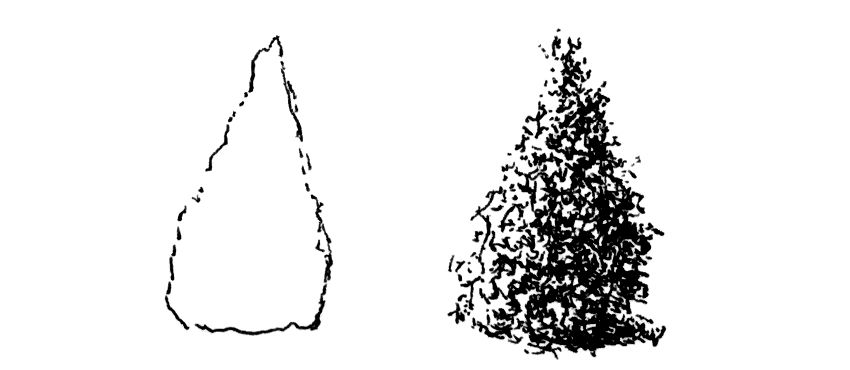 Flat vs. 3D object with volume
Flat vs. 3D object with volume
Example:
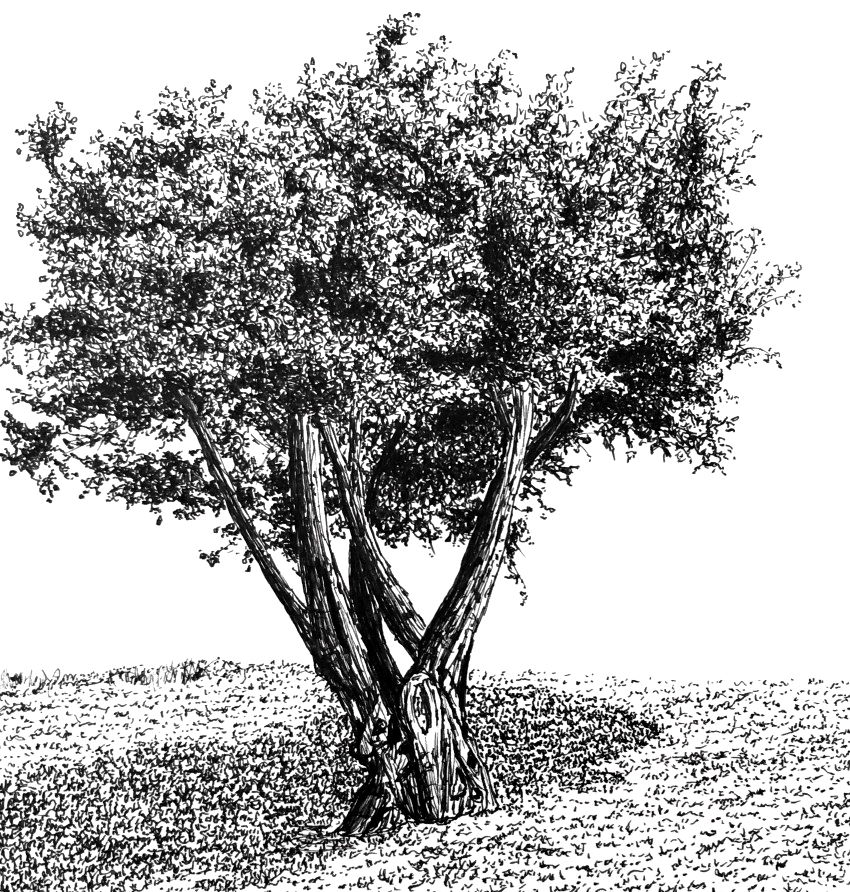 Pen and ink olive tree
Pen and ink olive tree
Tip:
When drawing from pictures, try to find pictures with strong contrast between dark areas and light areas so that the drawings have presence.
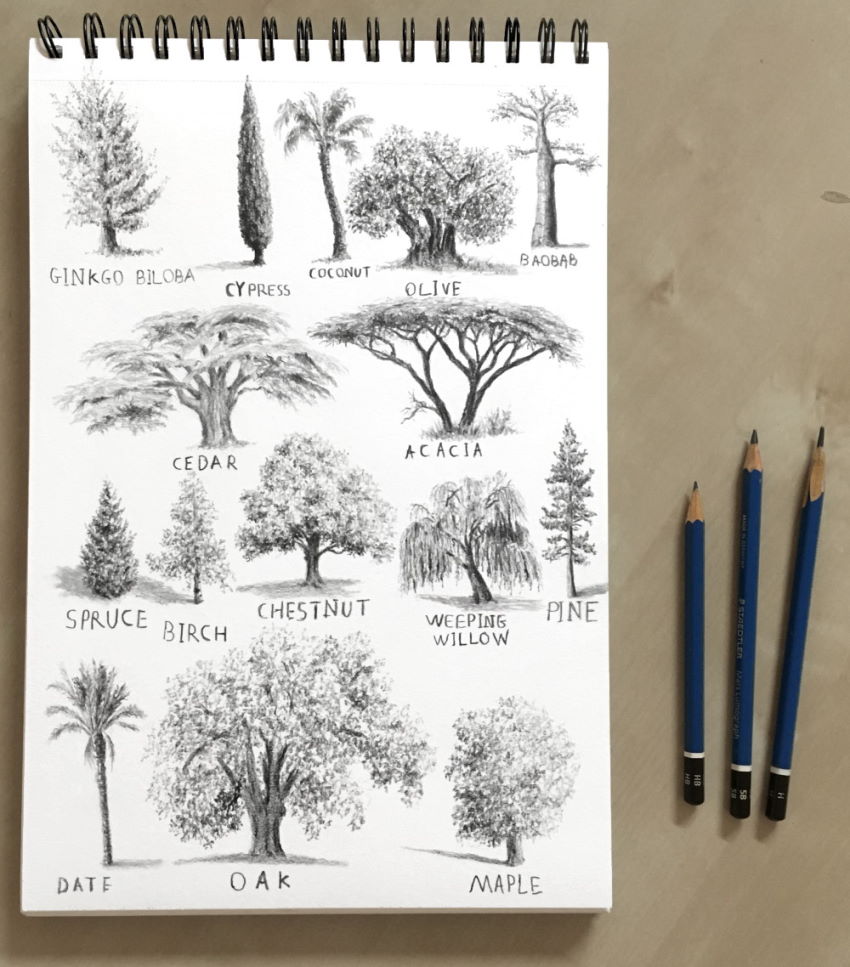 Trees graphite sketches
Trees graphite sketches
Here you can find my guide for recommended paper brands for drawing, for both pencil and pen.
2. Size
According to the rules of perspective, the farther an object is, the smaller it looks.
For that reason, when you draw similar objects in different sizes, the observer can conclude that smaller objects are farther away, thus creating a sense of depth.
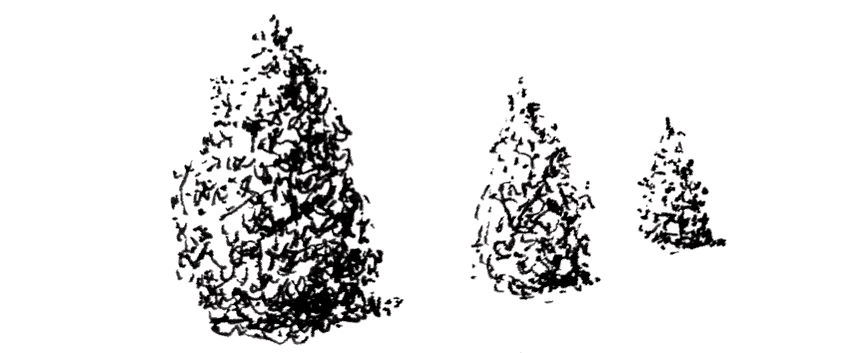 Objects with different size
Objects with different size
Example:
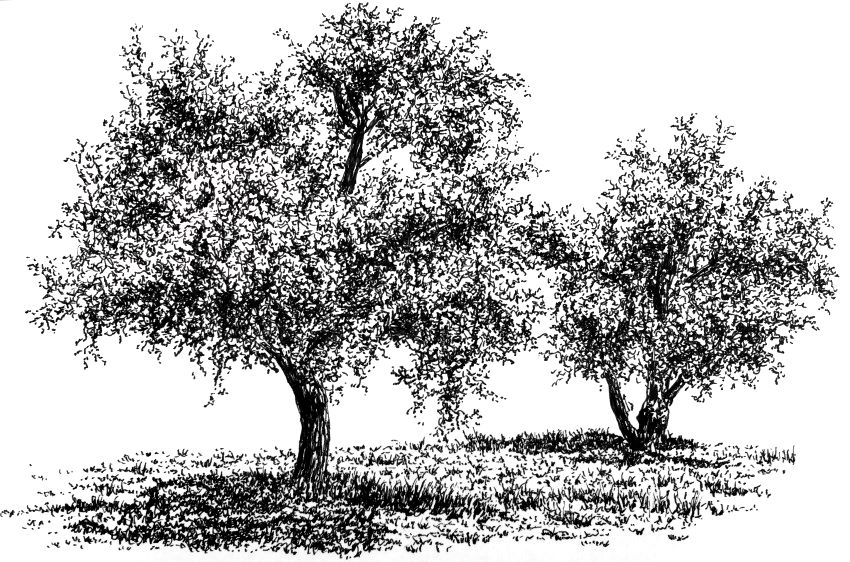 Pen and ink olive trees
Pen and ink olive trees
In addition, you can use size to create a sense of space.
Adding a small object to a defined space makes it look big.
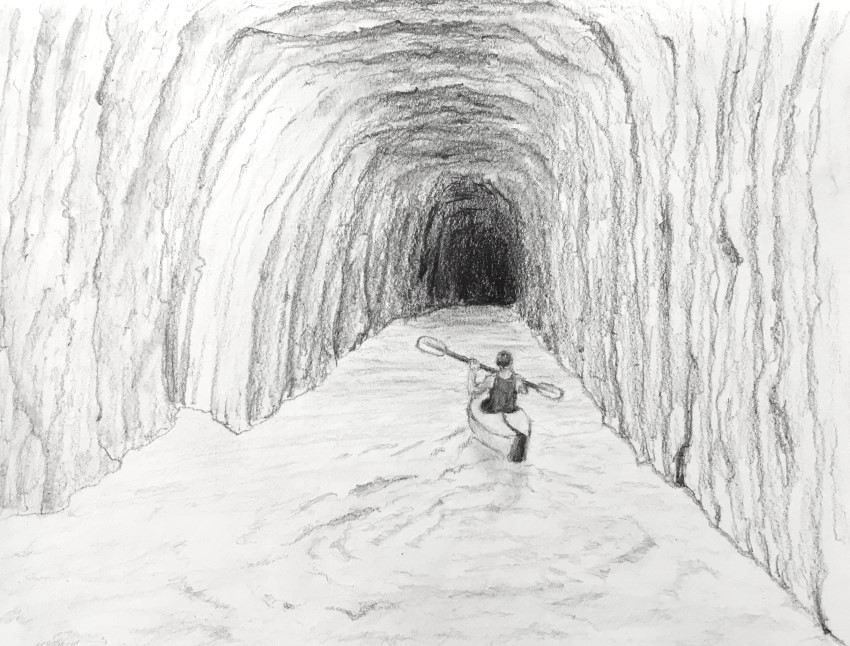 A small object defines big space
A small object defines big space
Adding a big object to the same space makes it look small.
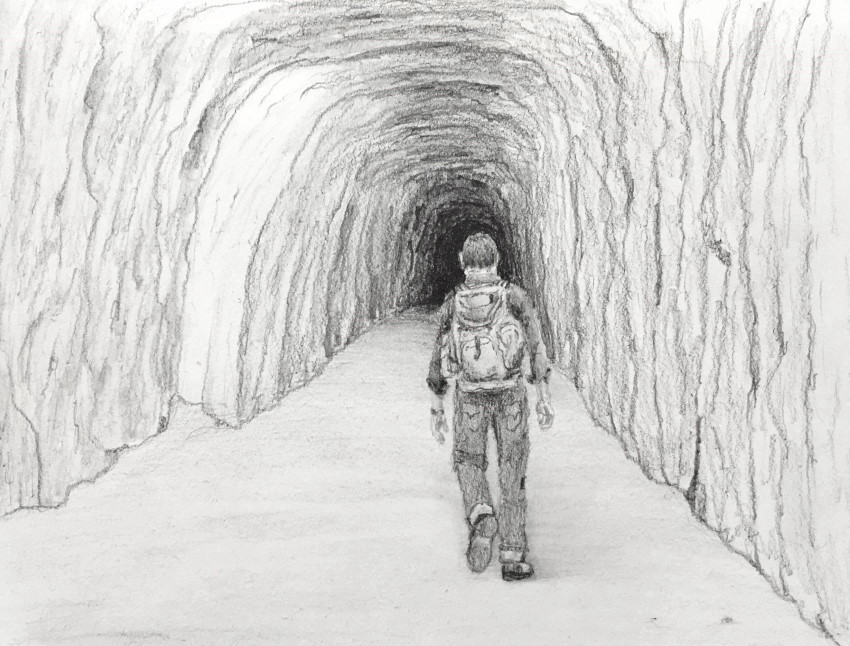 A big object defines small space
A big object defines small space
3. Overlapping
A body concealing part of another body indicates that the body it is hiding is farther away.
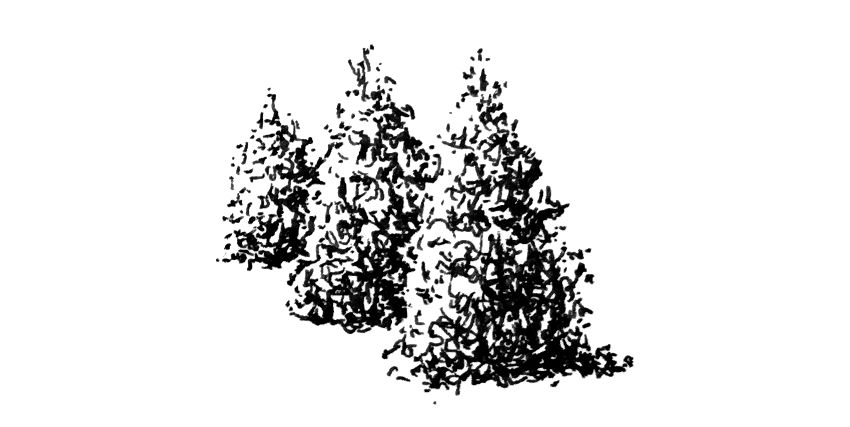 Overlapping objects
Overlapping objects
Overlapping is a powerful method to add depth!
Example:
 Overlapping olive trees
Overlapping olive trees
If you like my tree drawings, you are welcome to visit my guide on how to draw trees with a pen.
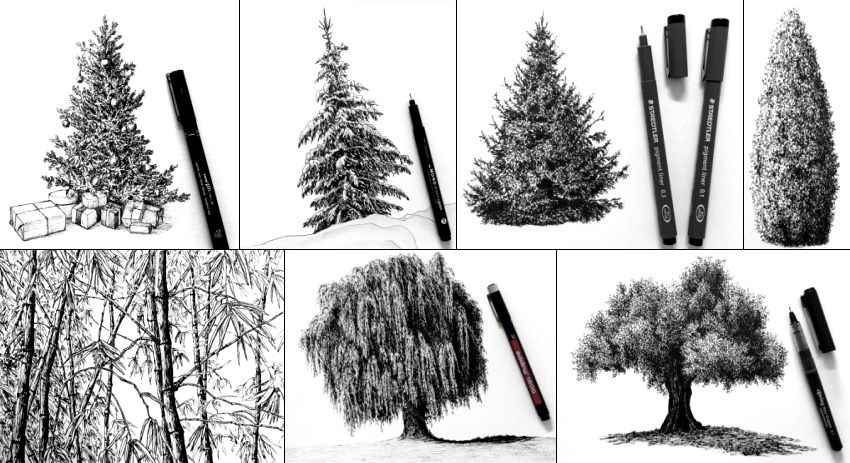
The more you use overlap, the better.
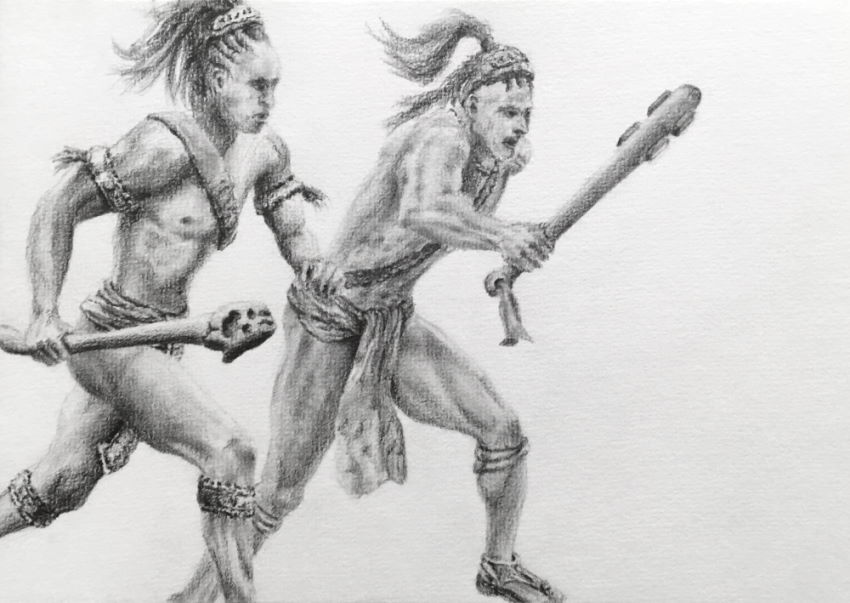
4. Position/Height
When the base of objects is positioned higher on the drawing surface, they look farther away.
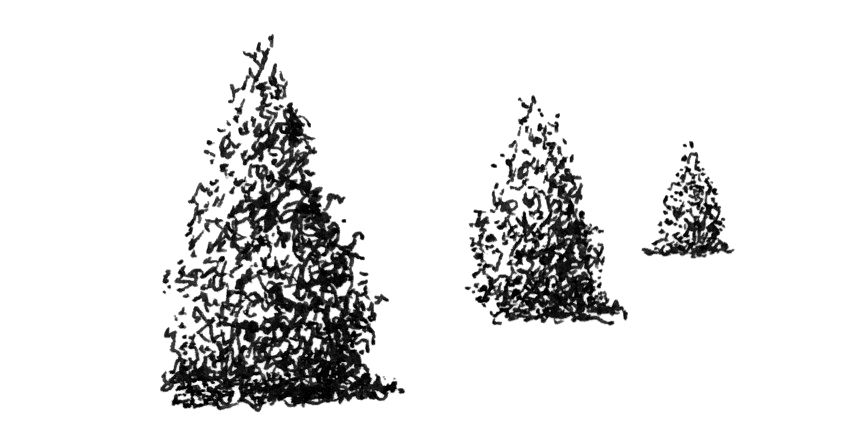 Different positioning
Different positioning
In most cases, the base of closer objects is lower on the drawing surface, AND the top part of close objects is higher than far objects.
Note:
This happens when the horizon is placed in the middle (more on that later).
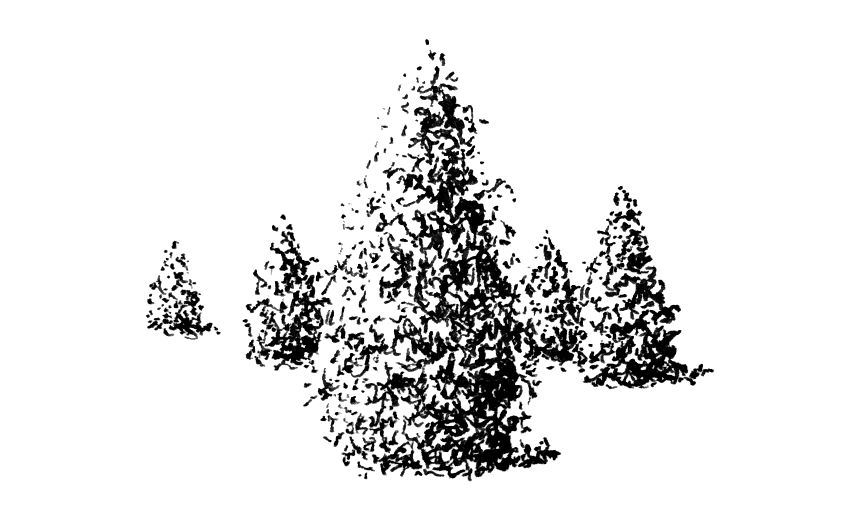 Closer object position and height
Closer object position and height
The reason is our optics. Our vision opens like a cone (hence, cone of vision).
Meaning, distant objects occupy a smaller part of our field of vision and are therefore translated as looking smaller by our brain.
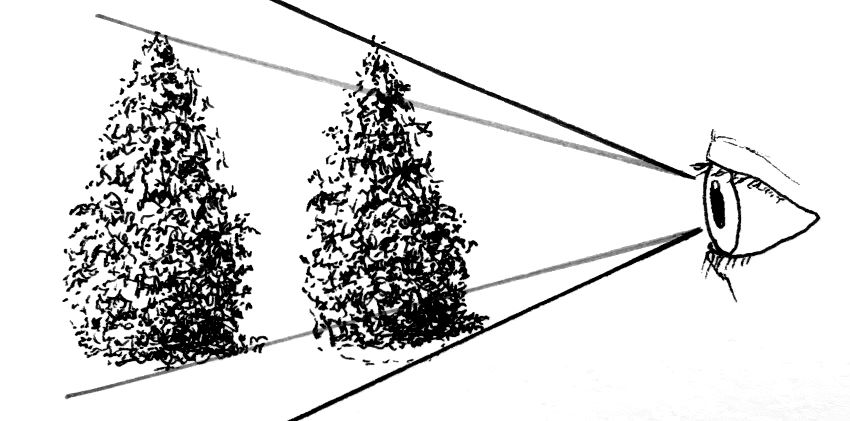 Observer angle of sight
Observer angle of sight
Remember:
There is no actual depth in a drawing; the paper sheet is flat. Therefore, use height to determine the illusion of depth.
Example:
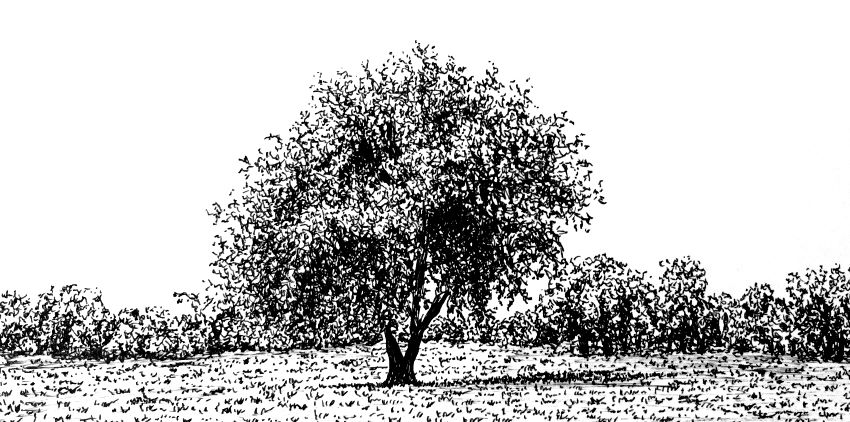 Tree position
Tree position
Here is my review of recommended technical pens for drawing, which I use on a regular basis.
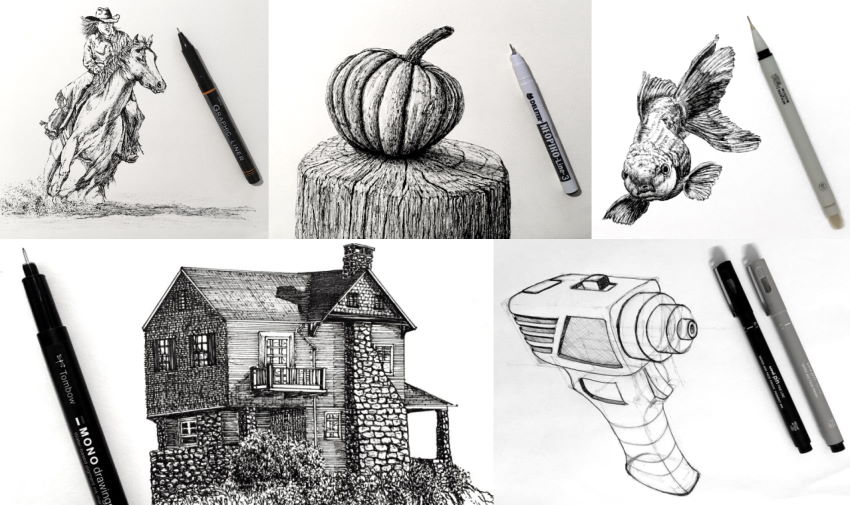
5. Contrast & Details
The contrast between the dark and light areas decreases, as does the amount of detail, as an object is farther away.
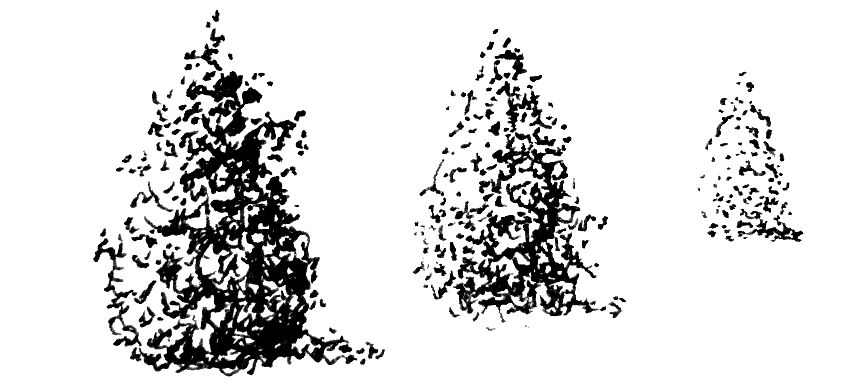 Decreasing levels of contrast & details
Decreasing levels of contrast & details
That is to say, when drawing or painting, areas with high contrast come forward, and areas with less contrast recede.
Example:
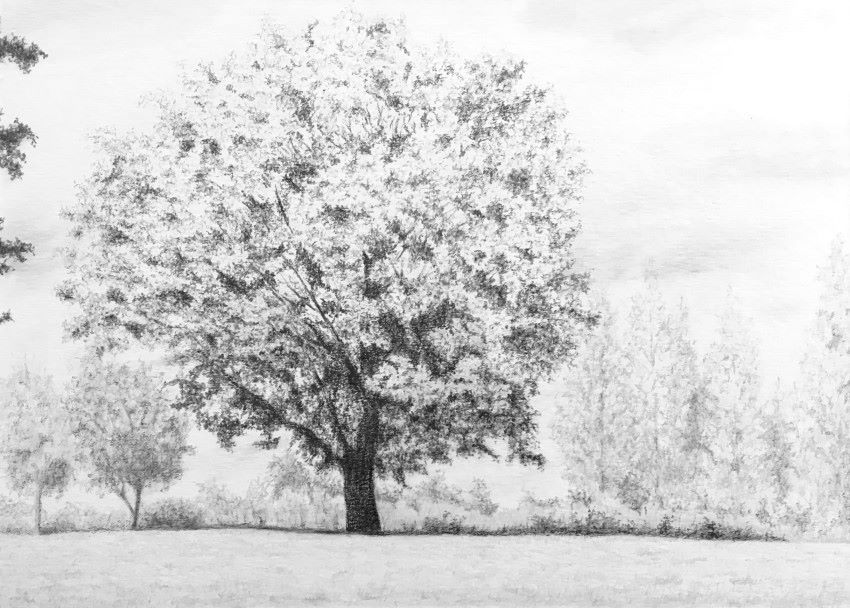 Trees pencil drawing
Trees pencil drawing
6. Edges
When an object or a surface ends in a sharp way, it means it has a hard edge.
Soft edges are when objects end in a gradual way, from dark to light.
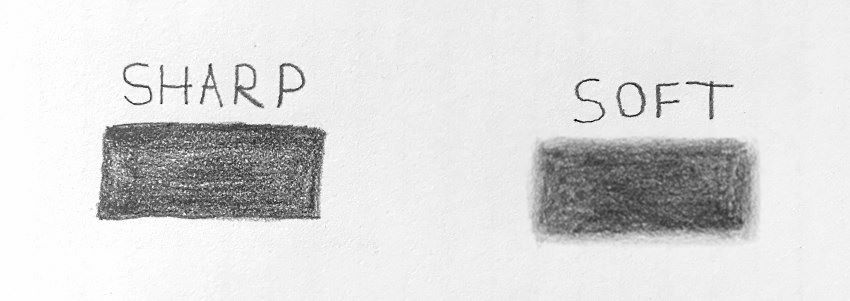 Hard/sharp vs. soft edges
Hard/sharp vs. soft edges
Hard objects have hard edges.
Cast shadows and soft objects (like hair, fur and fabric) have soft edges.
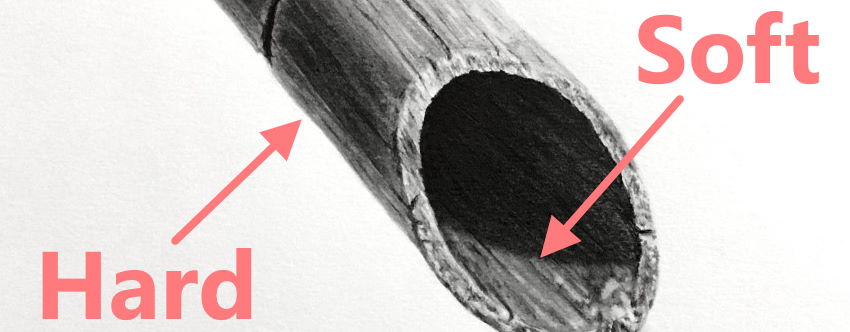
Attention to edges is critical for realistic drawing or painting.
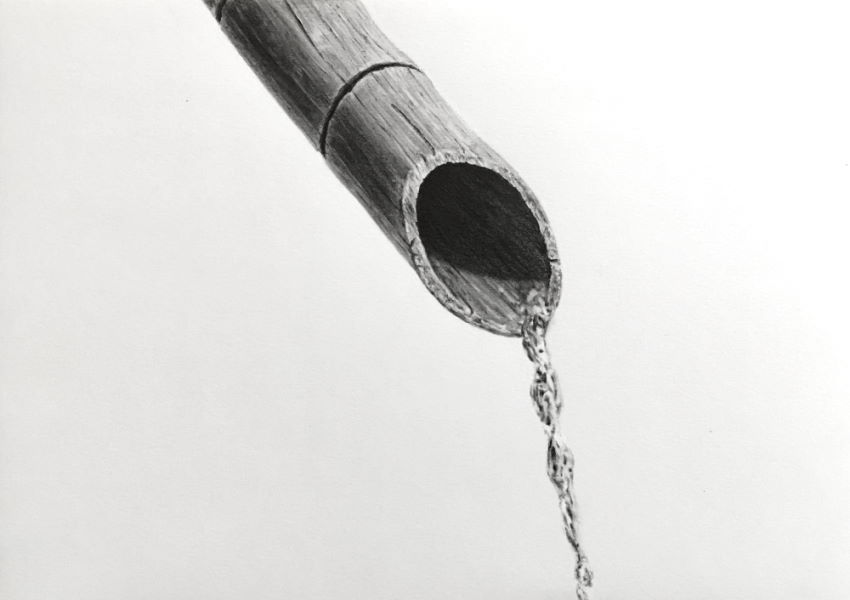
Foreground objects have hard edges and are therefore in focus.
Background objects have soft edges and are therefore blurry.
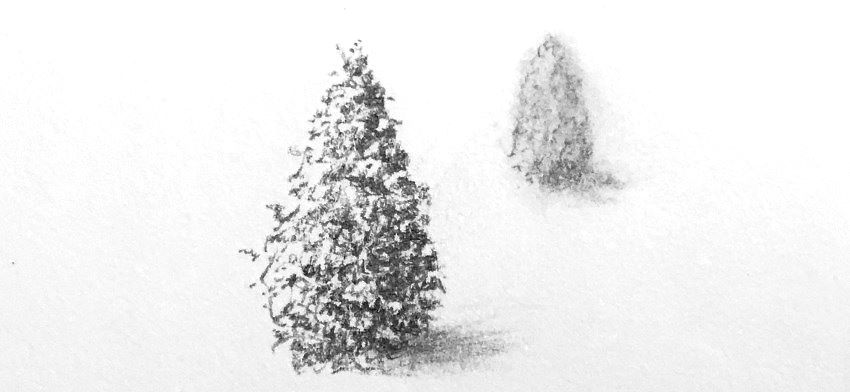 Background objects have soft edges
Background objects have soft edges
This happens due to atmospheric perspective.
Meaning, with distance, there are more atmosphere (air) particles between the observer and the object.
These particles scatter light. That is why distant objects look blurry, with fewer details and contrast.
You can use your artistic license to draw an effect of a camera, forcing depth between two objects that are relatively close.
Example:
 Two sparrow birds
Two sparrow birds
7. Horizon
Dividing your drawing into ground and sky by a horizon line, mountain range, vegetation, or any other way attests to depth.
In addition, by adding ground, the objects stop "hovering."
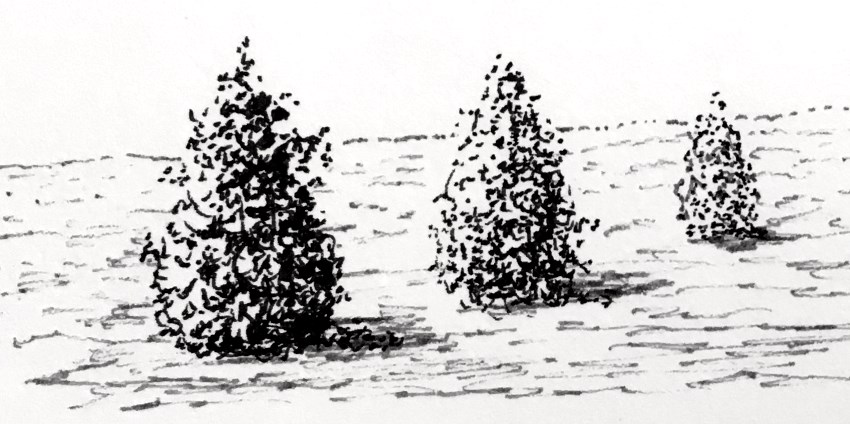 Horizon and ground
Horizon and ground
Pencil drawing example:
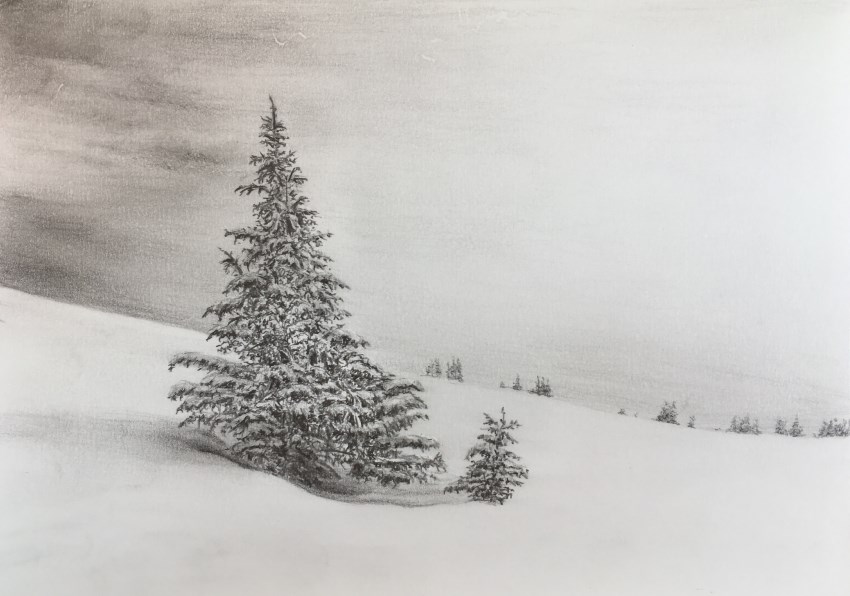 Snowy horizon & pine tree
Snowy horizon & pine tree
Remember:
Your drawing surface is flat! You have no depth, only width and height.
As objects are closer to the horizon, they appear farther away.
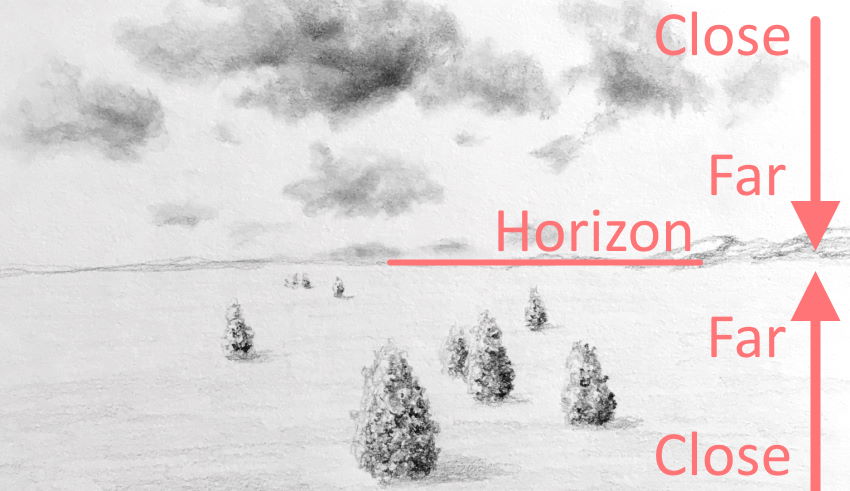 Height as a measure of distance
Height as a measure of distance
In the image above, trees that are higher on the drawing surface (toward the horizon) look farther away.
Clouds that are lower on the drawing surface (toward the horizon) look farther away.
For a list of equipment that I use for drawing, visit my guide for pencil drawing materials.
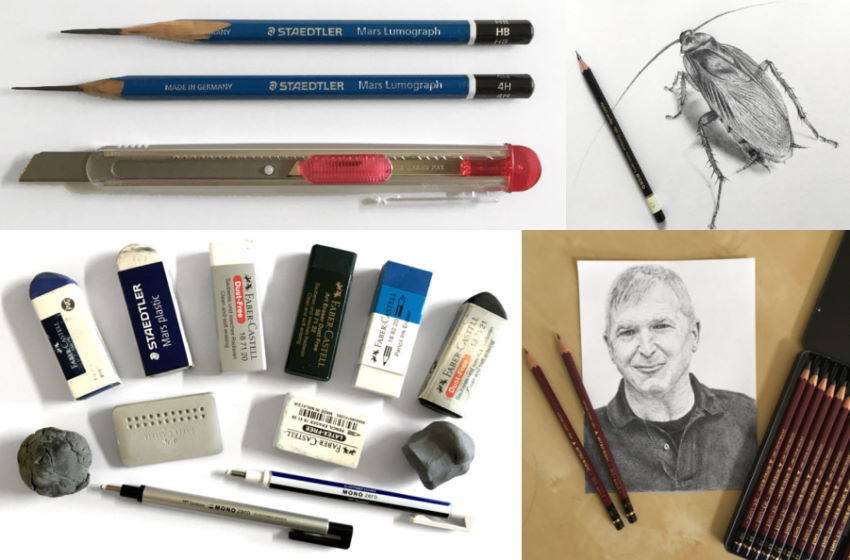
8. Perspective
By using linear perspective, it is possible to demonstrate depth realistically.
 Linear perspective
Linear perspective
Example:
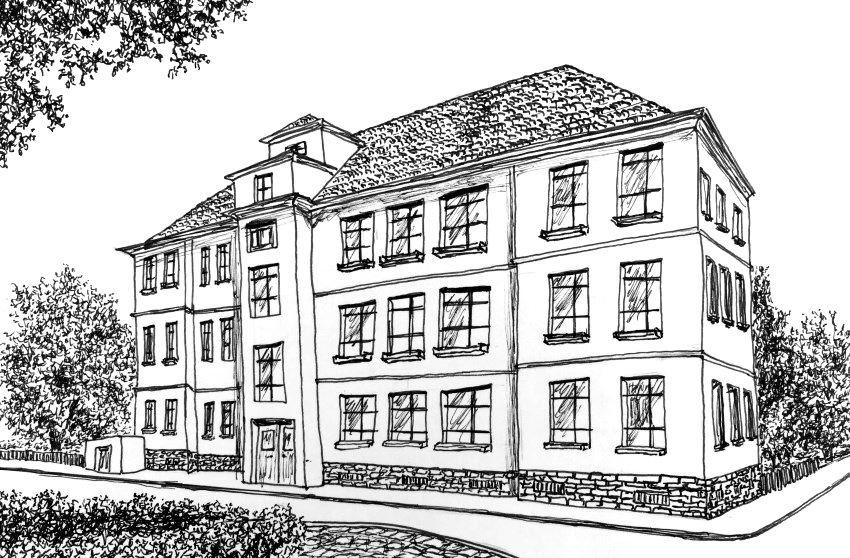 House sketch in perspective
House sketch in perspective
If you are new to linear perspective, read my linear perspective guide; it is an important drawing fundamental.
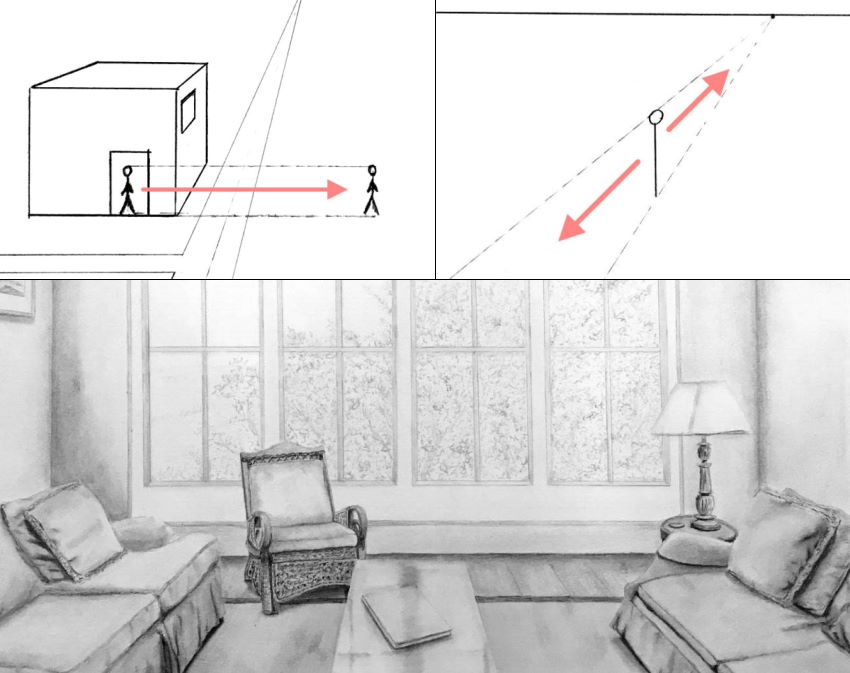
9. Foreshortening
Objects in front of the viewer, such as buildings, trees, mountains, people, etc., look smaller as they are farther away, but maintain the ratio between height and width. This means that there is no distortion.
On the other hand, when you change the object's (or your) angle of sight and the object is now along your line of sight, it gets shorter in that direction.
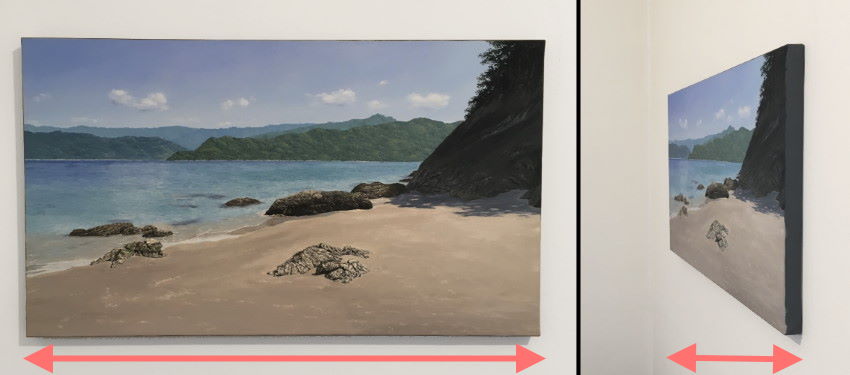 Foreshortened oil painting
Foreshortened oil painting
This distortion is due to the angle of sight. The more an object is in your direction of sight, the more it is distorted (becomes much shorter in that direction).
For example, a lake that in reality can be round becomes more elliptical as the distance between it and the observer grows.
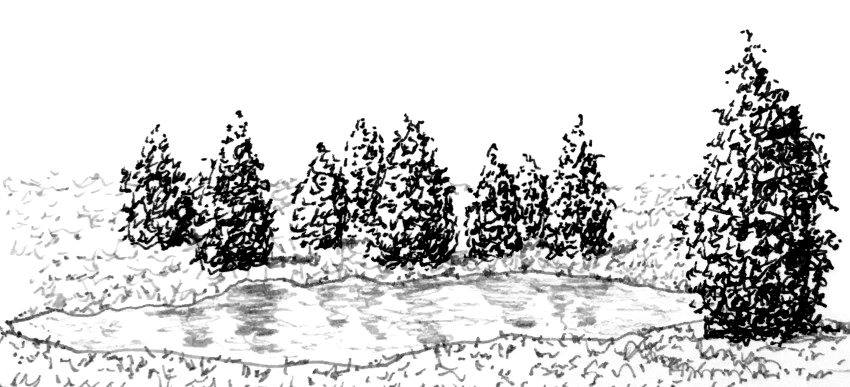 Foreshortened lake
Foreshortened lake
Understanding foreshortening is THE key advantage of experienced artists, especially when drawing from imagination.
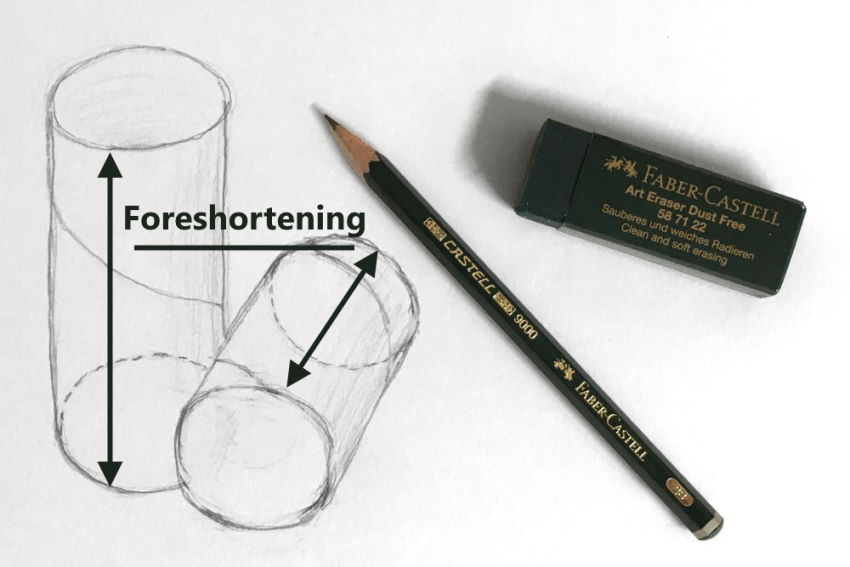 Foreshortened cylinder
Foreshortened cylinder
Once your sketch is correct, it is ready for rendering.
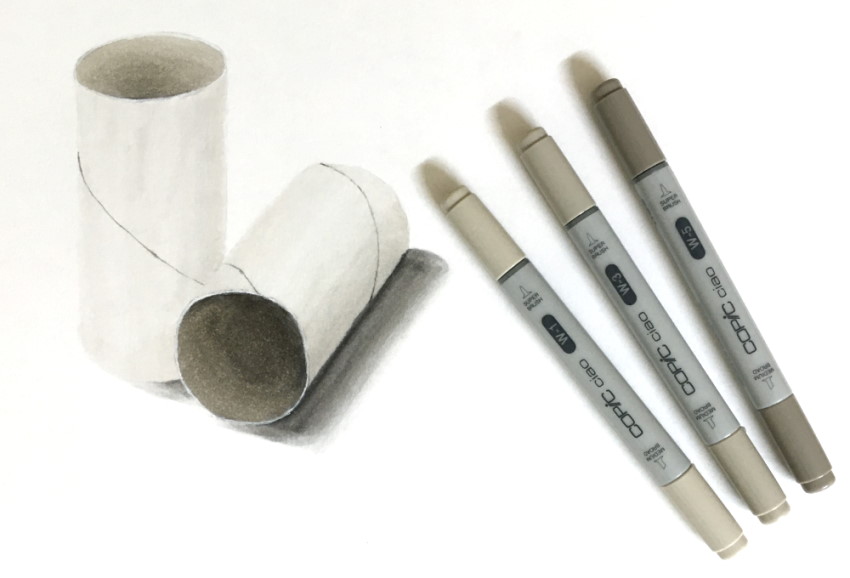 Coloring with markers
Coloring with markers
If you are new to foreshortening, visit my guide on drawing from imagination (It is an advanced guide, but explained step-by-step).
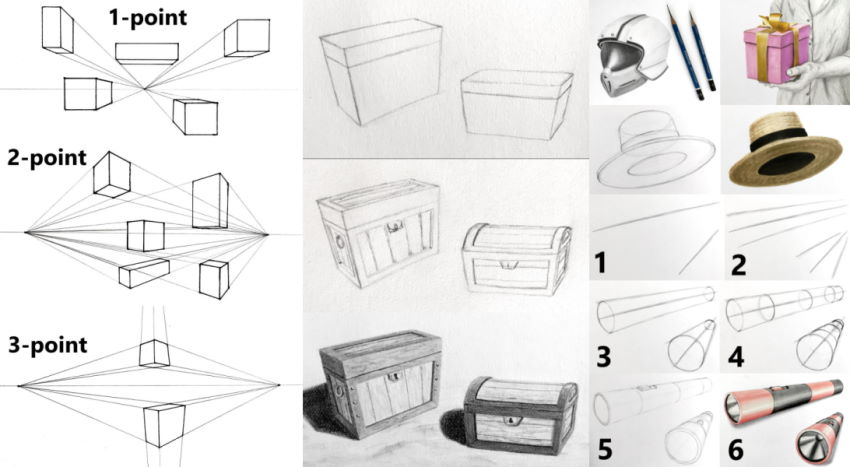
10. Colors
According to the rules of atmospheric perspective, the farther an object is, the more its color (hue) shifts toward the background color, which is usually blue sky.
 Green slightly shifts to blue
Green slightly shifts to blue
11. Saturation
The farther an object is, the less saturated its color is.
In other words, its color is less rich, bright, or intense, therefore becoming dull or neutral.
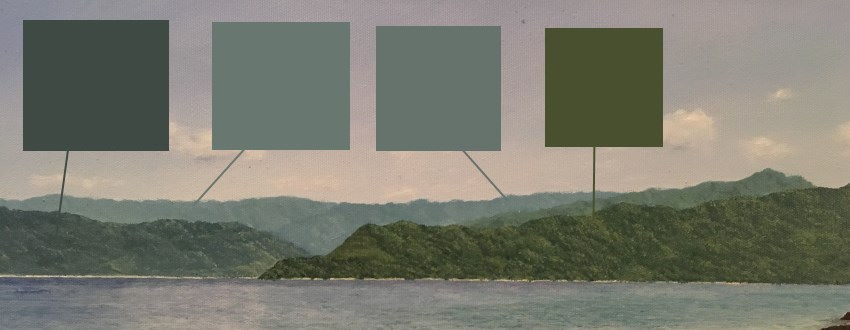 Far objects are dull or grayish
Far objects are dull or grayish
Example:
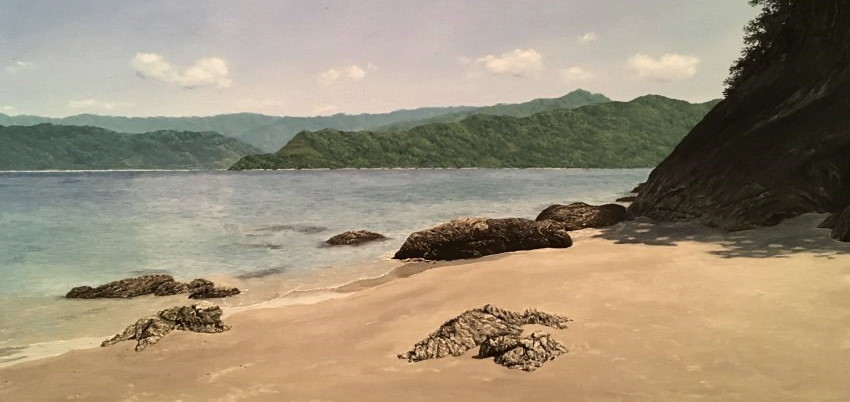 Seashore oil painting
Seashore oil painting
12. Temperature
Purple, blue and green are cool colors; they bring to mind the ocean and other cool things.
Red, orange and yellow are warm colors; they bring to mind fire or other warm things.
The farther away an object is, there are more atmosphere particles between it and the observer, i.e. the atmosphere color has a bigger effect.
When the sky is blue, the color of background objects shifts gradually toward a blue hue due to scattered light and therefore becomes cooler.
Foreground objects are warmer than the background objects since there are fewer atmospheric particles between the observer and the foreground objects.
Opposite phenomenon may occur at sunrise or sunset.
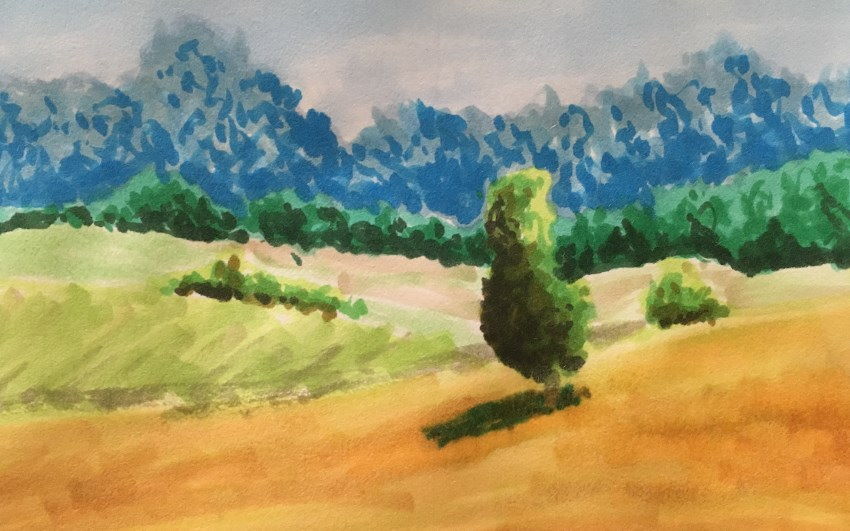 Temperature in landscape
Temperature in landscape
For a review of markers I use for drawing, visit my markers guide.
13. Values
According to atmospheric perspective, farther objects have higher brightness values, meaning their color is lighter.
 Farther object is lighter
Farther object is lighter
For monochromatic drawing, like pencil drawing, the same principle applies.
The key is to press harder with a drawing pencil for darker values, or to use pencils with different brightness values.
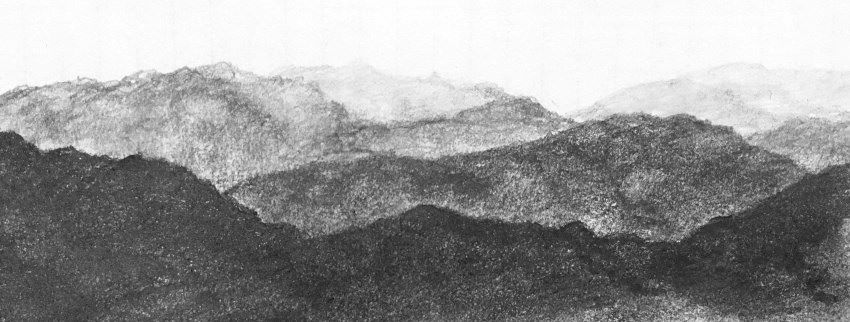 Foreground objects are darker
Foreground objects are darker
In addition, you can draw transitions (gradients) in brightness values to create the illusion of depth.
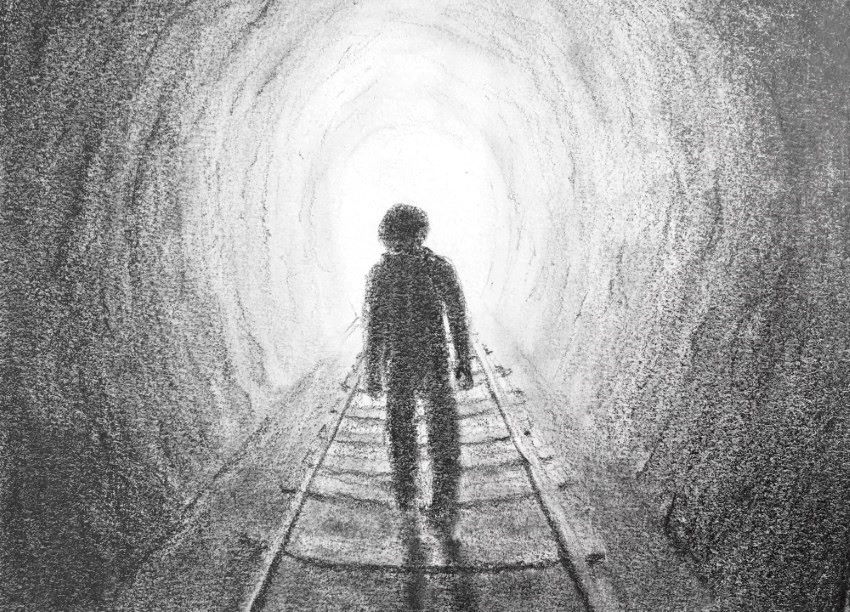 Transition from dark to light
Transition from dark to light
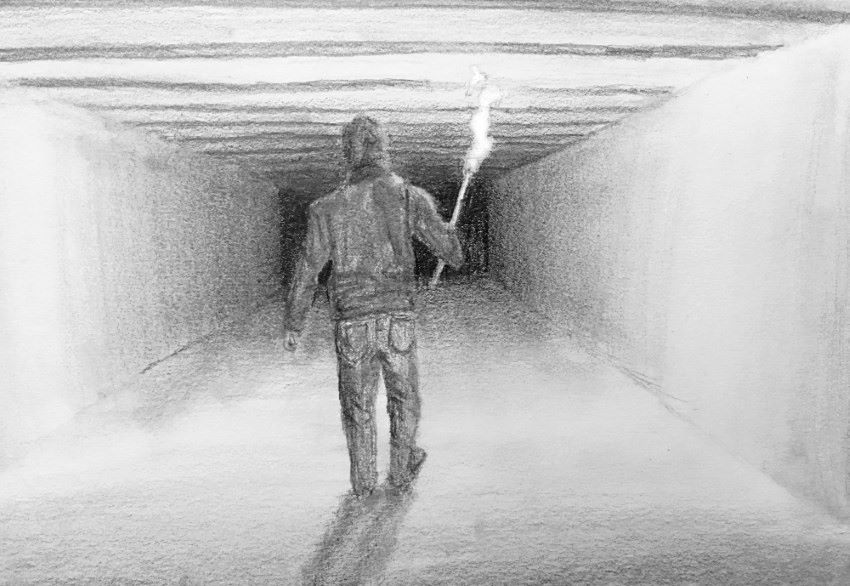 Transition from light to dark
Transition from light to dark
14. Cast Shadow
It is important to draw or paint cast shadows when necessary, and to adjust their direction to the opposite side of the light source.
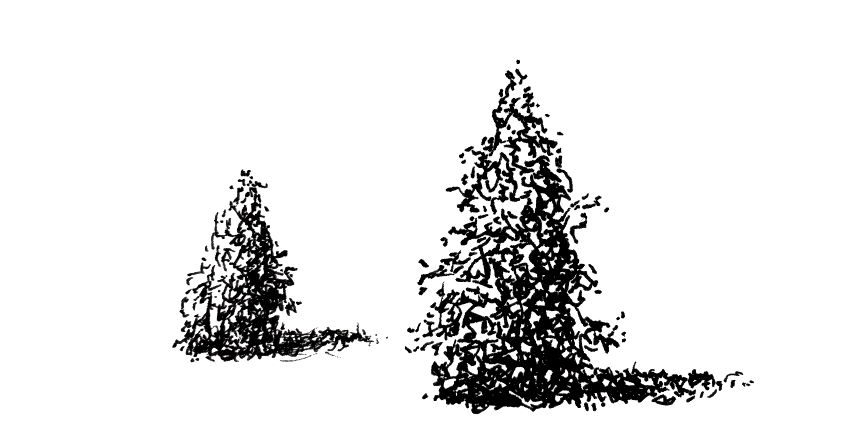 Cast shadow
Cast shadow
Example:
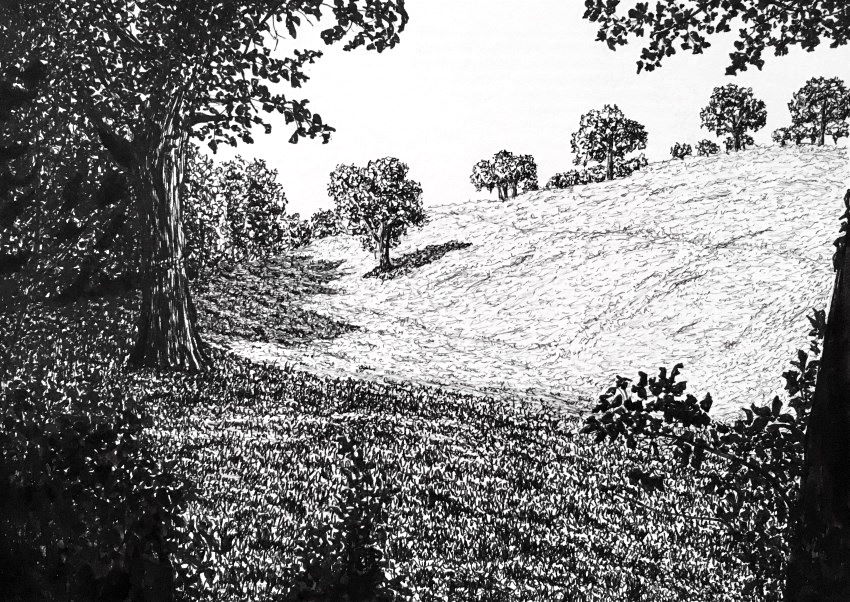 Landscape with pen & ink
Landscape with pen & ink
Remember:
As mentioned above, cast shadows usually have soft edges.
15. Brushstrokes and Marks
Some painting styles are done with a collection of single brushstrokes. For example, painting grass blades or leaves.
In these cases, use larger paintbrushes for foreground strokes.
You can do the same with a technical pen.
Use a pen with a bigger nib size for bigger marks when drawing foreground objects and a smaller nib size for background objects.
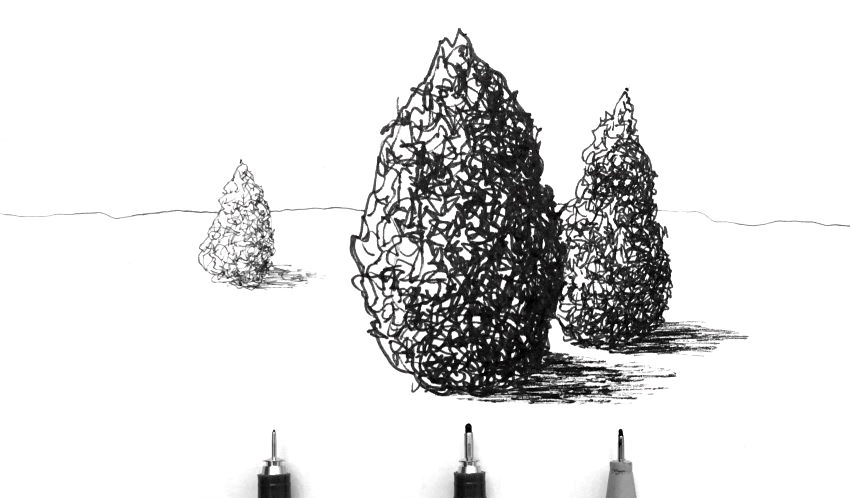 Different nib sizes
Different nib sizes
Example:
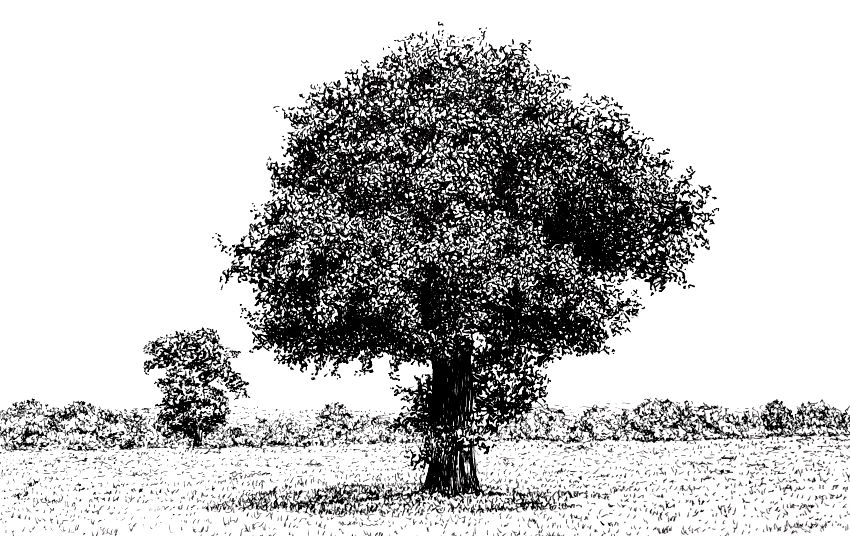
For an initial sketch, the direction of lines, marks or brushstrokes is important.
Same basic shape with different directions of marks tells a different story.
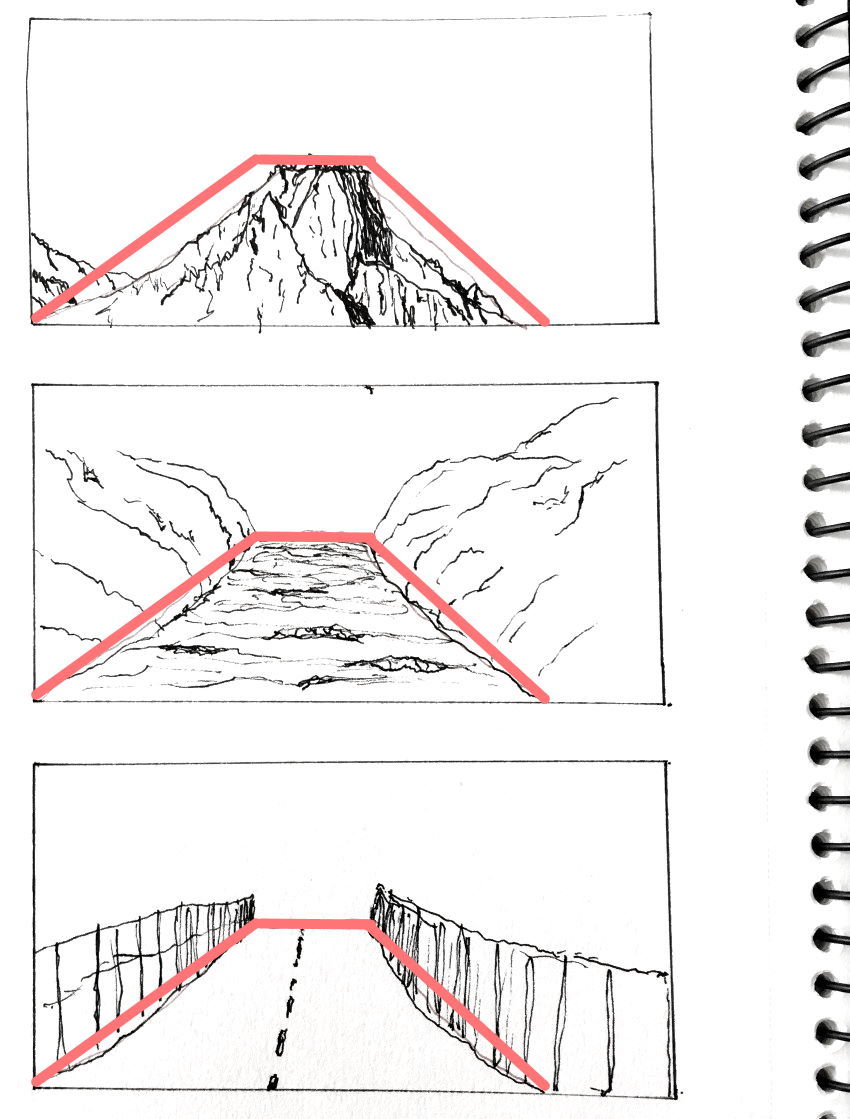 Marks direction for creating shapes and depth
Marks direction for creating shapes and depth
When planning a painting, the direction of marks plays a major role.
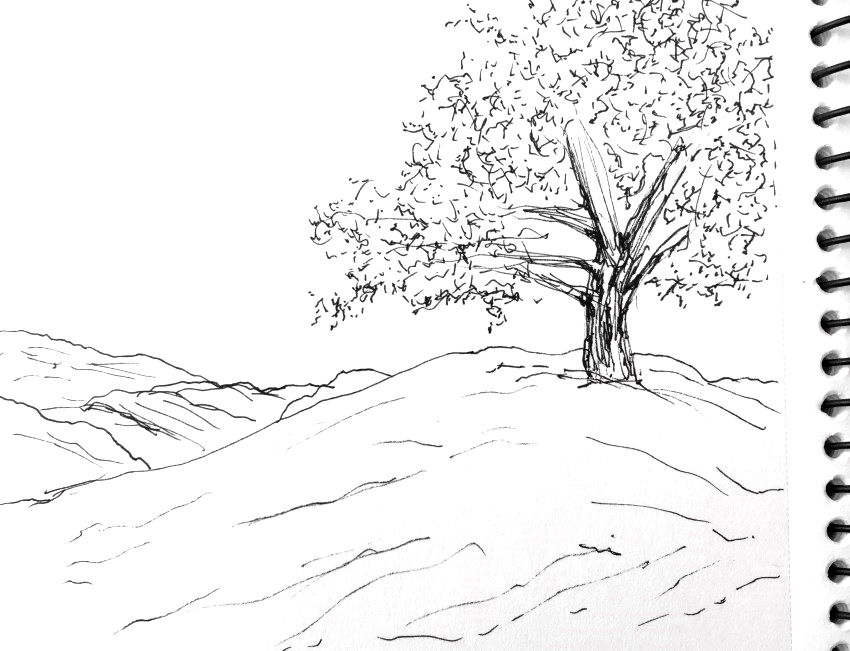 Marks as first step
Marks as first step
And they are necessary when painting.
Example:
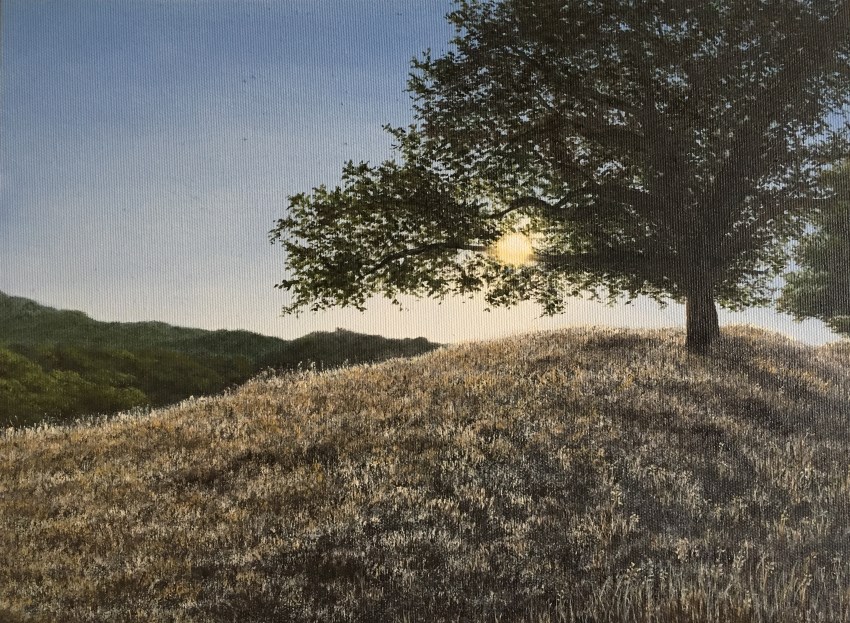 Tree in sunset oil painting
Tree in sunset oil painting
If you are new to oil painting, it is good to know the different types of paintbrushes for oil painting.
Bonus: Composition
When planning a drawing, it is important for it to be interesting for the observer.
A good composition can add depth.
In many cases, try to avoid front or side views. They look flat.
 Side, front, and three-quarter views
Side, front, and three-quarter views
Draw foreshortened objects (in perspective).
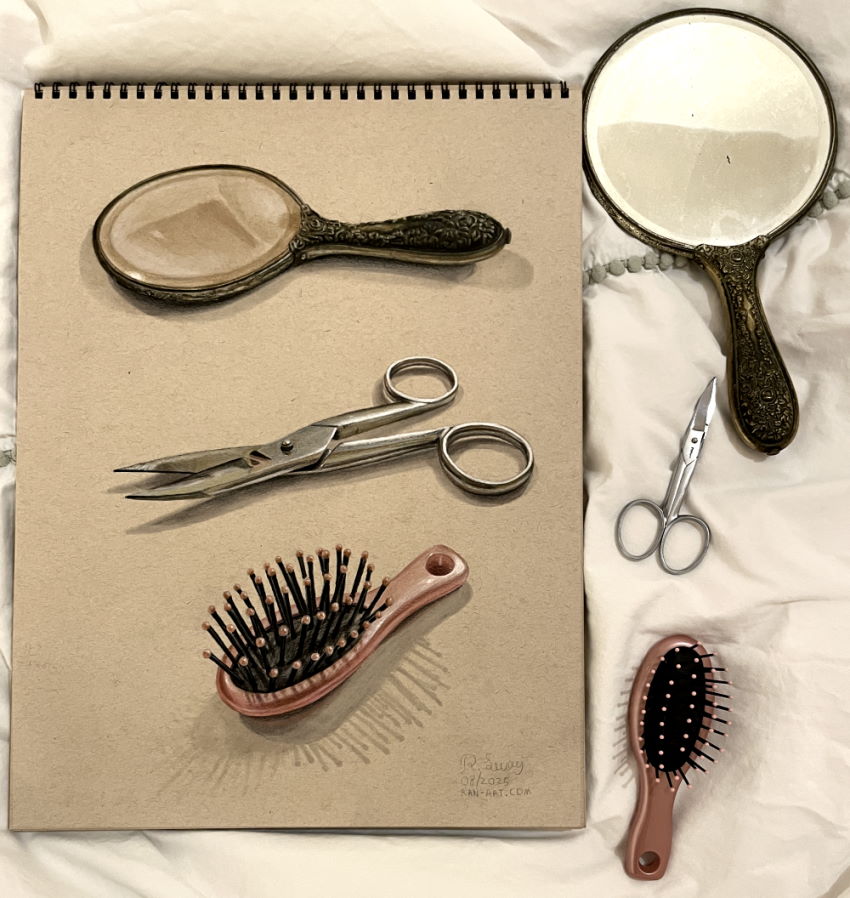 Still life objects in perspective.
Still life objects in perspective.
Use a three-quarter view for your portraits.
 Three-quarter cat portrait
Three-quarter cat portrait
In order to learn how to compose a scene and render it, read my tutorial on composition drawing.
Summary
The key to creating depth when drawing is the use of different methods to produce a three-dimensional look on a two-dimensional surface.
Simply put, there is no actual depth in drawing (or painting), but an illusion of depth.
Colors:
When using colors, pay attention to color attributes such as hue, saturation, value and temperature.
Color is an important painting fundamental. Here is my guide on mixing colors for realistic painting.
In a monochromatic drawing, correct brightness values are crucial.
Landscape vs. still life:
For landscape painting, it is beneficial to understand linear and atmospheric perspective.
When painting still life, use methods like contrast, overlap and edges to create depth.
Where to go next?
After understanding depth, you might want to visit my beginners guide to realistic pencil drawing.
And learn about the 8 key factors for painting realism.
If you like drawing with pens, here is my flower drawing guide.